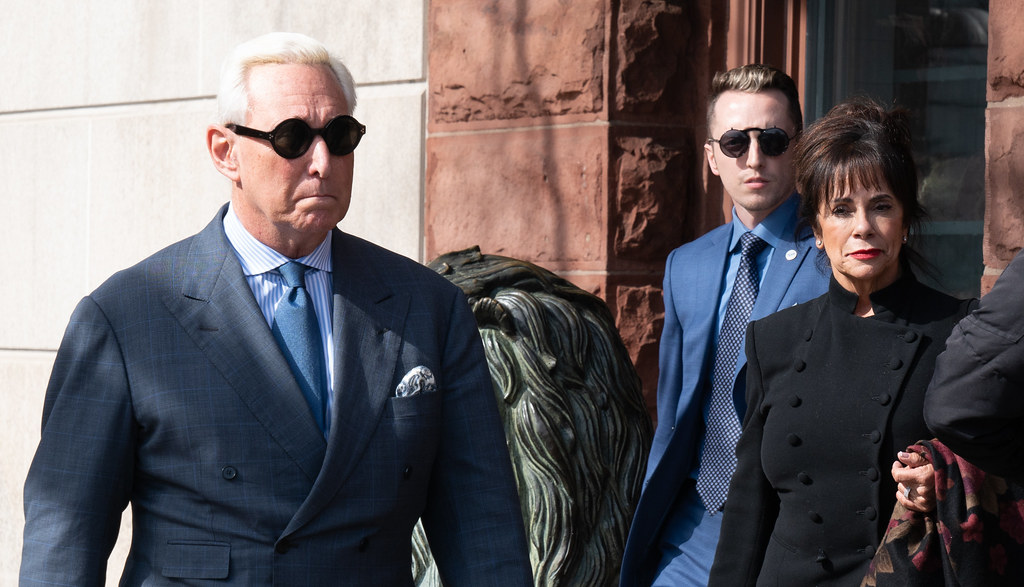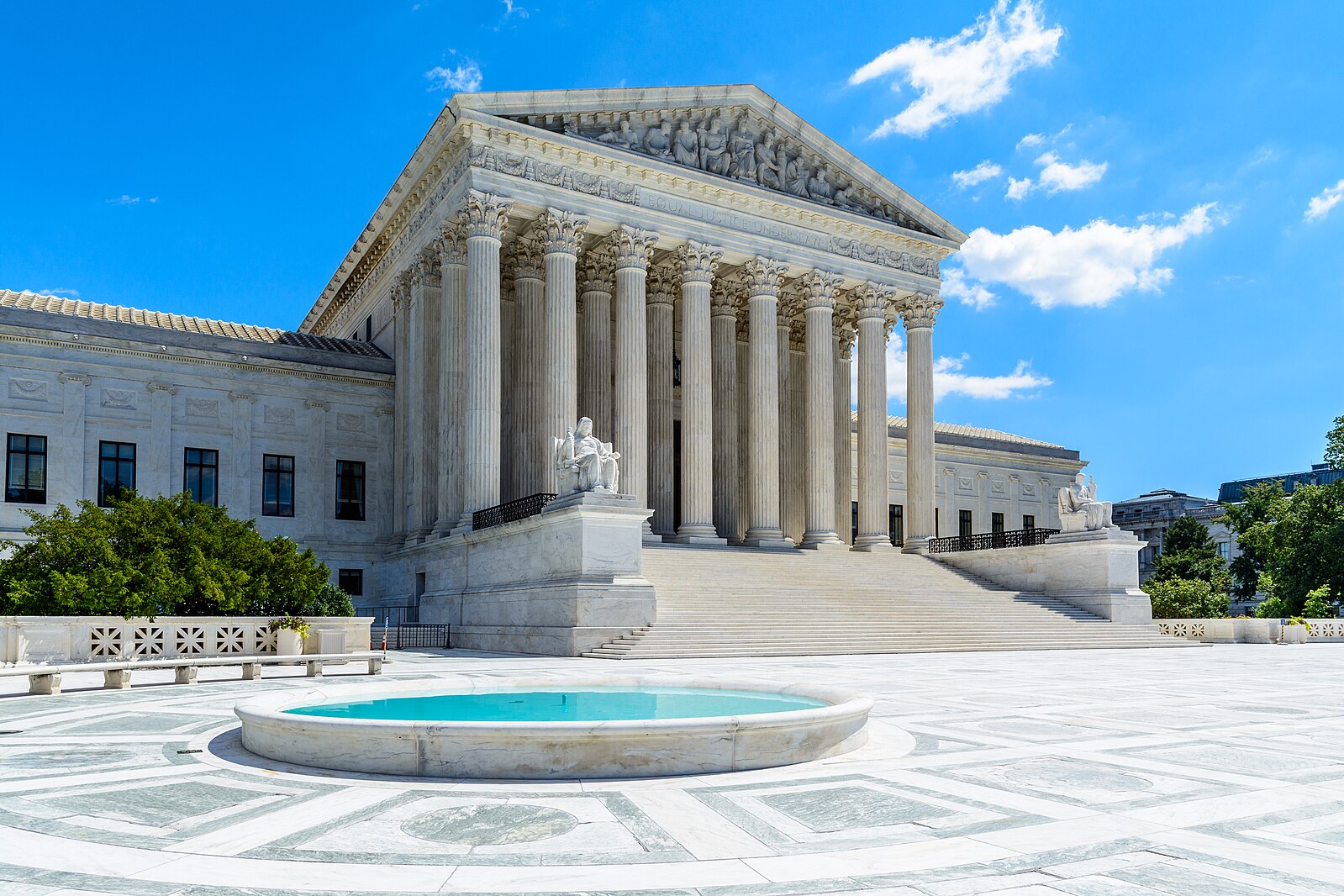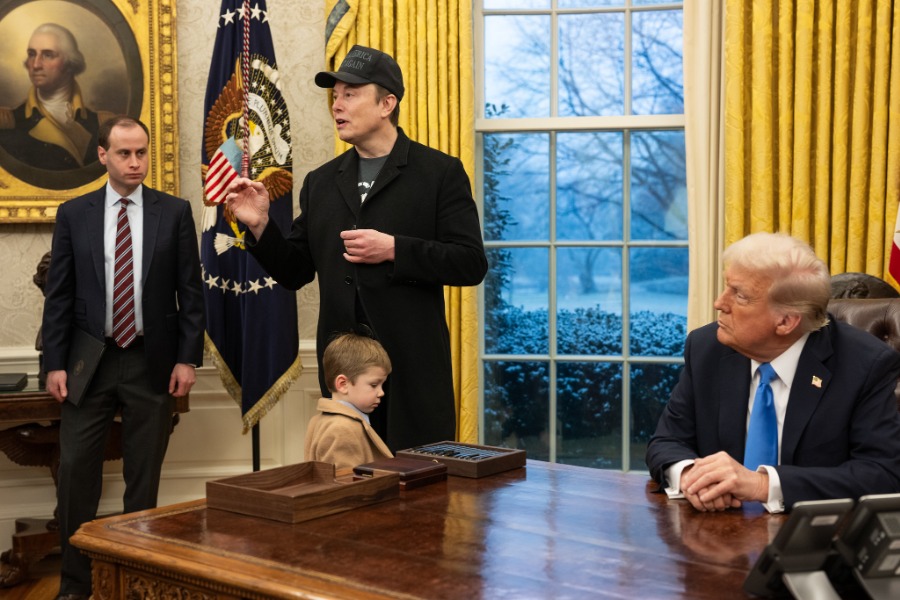The Roger Stone Trial: What’s Left of the Mueller Investigation
Somewhat lackluster attention to Roger Stone’s trial raises the question of who still cares about the Mueller investigation.

Published by The Lawfare Institute
in Cooperation With

Roger Stone’s trial was always going to be a show. The longtime political consultant and self-described “agent provocateur” has been known for years for his flamboyant tactics. What’s more, the Stone case was as close to a “collusion” trial as the Mueller investigation was going to get. Stone is charged with lying to Congress about the nature of his connections to WikiLeaks founder Julian Assange regarding hacked DNC emails, lying about his contacts and coordination with the Trump campaign about WikiLeaks, and pressuring a witness to his activities to lie. The trial should be a big deal. And in anticipation of the crowds of expected journalists, politicos, bystanders, gawkers and protestors, the court had set aside two overflow rooms—one for the general public and one for the media.
But the show turned out to be something of a bust—or, at least, the ticket sales were disappointing.
Ninety minutes before the trial’s opening on Tuesday, Nov. 5, fewer than 10 people waited awkwardly outside the courtroom of Judge Amy Berman Jackson. A few journalists and spectators eventually trickled in, along with members of the far-right media. These included the controversial Milo Yiannopoulos—who is apparently writing a book about the trial—and Gavin McInnes, founder of the far-right Proud Boys group. But it wasn’t enough to fill the courtroom. The defendant himself stayed quiet, speaking only to waive his right to be present for jury selection, as he had apparently come down with a bout of food poisoning.
Opening arguments on Wednesday drew a slightly larger crowd. For a time, the court operated the overflow room and there was a separate media room to allow reporters to observe the trial with phones and computers—electronics being banned from the actual courtroom. But even then, the courtroom was at capacity only briefly in the late morning for the government’s opening arguments. Stone had recovered but once again remained silent and stoic throughout the proceedings.
For a man who once called politics “performance art,” it was a rather muted show.
The proceedings grew more theatrical during radio personality Randy Credico’s testimony on Thursday. This included Credico’s impersonation of Bernie Sanders and an abundance of references to “The Godfather,” leading Jackson to instruct the jury in the evening not to watch the film on Netflix. Former White House Chief Strategist Steve Bannon made some headlines when he appeared briefly on Friday—here are some excellent blow-by-blow accounts of the proceedings. But it’s hard to escape the feeling that public attention to the Stone trial has been lackluster.
Admittedly, other big stories are leading the news these days: impeachment, off-year elections and the Democratic primary have all justifiably pulled focus away from Stone. But it feels like not so long ago the courtroom for a trial like this would have been jammed. Before the trial, a journalist noted that he arrived at Paul Manafort’s August 2018 trial in the Eastern District of Virginia at 5:00 a.m., hours before the trial was supposed to begin, and there was already a line. And that trial was for financial crimes unrelated to Donald Trump. This one, by contrast, involves charges close to the heart of the president’s “no collusion” defense. So far, at least, it hasn’t even merited a presidential tweet.
The Stone case will be the last of the Mueller trials, and it’s a weird kind of swan song. While the issues are serious, some of the characters seem like actors in the theater of the absurd. An investigation that dealt with a foreign effort to intervene in our electoral process is ending with “The Godfather,” a therapy dog and profanity-laced text messages. The trial also serves as an peculiar reunion for some of the more obscure characters who populated headlines and talking-head panels in the Mueller era. For instance, waiting outside the courtroom for the trial to resume after a break, a gray-haired man with a large silver skull ring on his middle finger snapped at an older gentleman in a sleek suit. The first turned out to be Michael Caputo, the former Trump campaign aide and Stone ally who made a cameo appearance in Mueller’s report. The second was Larry Klayman, the conservative activist and attorney who represents Stone acquaintance Jerome Corsi, who the government alleges was one of Stone’s intermediaries to WikiLeaks and who has sued both Stone and Mueller. Meanwhile, representatives from the One America News Network scoffed at some of the judge’s rulings, while some Mueller alumni spoke quietly to one another.
It is an odd throwback to the heyday of the Mueller investigation, when it felt impossible to keep track of the seemingly infinite characters, subplots and interpretations of fact.
All of which raises the question of who still cares about Stone—and, by extension, the Mueller investigation. If the audience in the courtroom is any metric, the answer to that is a few journalists, former members of the Mueller team, and a large contingent of the far-right media, and that’s about it. That might be disheartening, but it provides an interesting lens into current feelings about the Mueller probe. This was a massive investigation that, just seven months ago, released a shocking and damning report about the Trump campaign’s and Trump’s own conduct related to contacts with the Russian government during the 2016 election and efforts to cover up—and obstruct investigations into—that conduct.
The broader public doesn’t seem to care anymore. The country paid attention to the Mueller report for a while, but after Mueller’s testimony and an anticlimactic reaction from Congress, that interest, at least in the mainstream media, seems to have faded away. While Congress continues to litigate for the Mueller report materials and testimony from witnesses in that investigation, it hasn’t been front-and-center in the impeachment inquiry, whose attention has migrated west, from L’Affaire Russe to L’Affaire Ukrainienne. The Democratic candidates aren’t really talking about it either.
Yet if popular interest has faded among those opposed to the president, there’s still enough interest in the far-right media constituency for Yiannopoulos to write a book about the trial and for Tucker Carlson of Fox News to spend time on his Wednesday evening show smearing Judge Jackson. Conspiracy theorist and Stone ally Alex Jones went on a tirade against a potential juror who had worked for the Office of Management and Budget (OMB) during the Obama administration, calling her a “minion of the left.” He even flashed a picture of a former OMB employee on the screen, alleging it was the potential juror. (It turned out he had the wrong person.) The supporters of the president with the largest microphones are using them to discredit this trial, even as his opponents have largely moved on.
There is also the question of Stone’s underlying conduct regarding backchanneling between WikiLeaks and the Trump administration that is asserted in the indictment and supported by documentary evidence. To be clear, the underlying conduct with respect to WikiLeaks is not directly at issue in the criminal trial; rather, Stone faces charges for attempting to obscure that conduct from the House Intelligence Committee’s investigation into Russian interference in the 2016 election.
Stone faces one count of obstructing a proceeding, five counts of making false statements to Congress, and one count of witness tampering for allegedly threatening and seeking to influence Credico. These efforts included threatening Credico’s dog, Bianca. It also included telling Credico to pull a “Frank Pentangeli,” a reference to a character in “The Godfather: Part II,” who, in the words of the indictment, “testifies before a congressional committee and in that testimony claims not to know critical information that he does in fact know.” Stone, according to the government, made false statements that he did not have documentation of conversations about Assange during the period in question, when he, in fact, did; that references he made during August 2016 to an “intermediary” with WikiLeaks referenced Credico, while the government alleges they reference Corsi; that he did not ask his “intermediary,” meaning Credico, to communicate anything to Assange on Stone’s behalf, when he had; that Credico did not communicate by text or email about WikiLeaks, when he and Stone in fact communicated by text and email about the organization; and that he never discussed the conversations with the “intermediary” with anyone involved with the Trump campaign, when the government alleges it has documentary evidence contradicting this claim.
Rehashing that information in a criminal trial may shed new light on the specifics of Stone’s interactions with the Trump campaign. The government has already made public an email sent to Manafort, then the campaign chairman, a day after Corsi informed Stone that their “friend in the embassy,” referring to Assange, was planning two more “dumps” of hacked emails. The email’s subject was, “I have an idea,” with the text, “To save Trump’s ass.”
Stone is alleged to have played a pivotal part in the Trump campaign’s efforts to plan a press strategy around the release by WikiLeaks of hacked emails—as the link between the Trump campaign in August 2016 and Julian Assange, with whom he is accused of communicating. During opening arguments for the government, prosecutor Aaron Zelinsky stated repeatedly that the jury will see that Stone lied because “the truth looked bad.” The truth looked bad for him and bad for the president, who was at that point beating a steady drum of “No collusion!” Zelinsky supported his more-than-hour-long opening statement with texts and emails involving Stone, Corsi, Credico and Trump campaign officials.
Stone’s alleged efforts to cover it up aside, the truth did eventually come out regarding the Trump campaign’s conduct and its interface with Russian efforts to interfere with the 2016 election. There are 448 pages of fact-finding and legal analysis from Mueller and his team and hundreds of pages of indictments and plea agreements telling a damning story of what went on during the election and ensuing investigations.
There are also the convictions. Michael Flynn, George Papadopoulos, Michael Cohen, Rick Gates and Alexander van der Zwaan all pleaded guilty to lying to federal officials about the facts surrounding this investigation. They were all willing to violate federal law to keep the truth from being exposed. Manafort was convicted at one trial and reached a plea deal to avoid another one. For one reason or another, to use Zelinsky’s phrase, all of these people pleaded guilty to lying because the truth looked bad. Stone, by contrast, is going to trial. But, in any event, his alleged attempts to contact Assange through Corsi and Credico and his efforts to share information with the Trump campaign were eventually exposed.
Which brings us back to the question of who cares about the Roger Stone trial and, by extension, the Mueller investigation—and why the right-wing media still care so much about it. Is it just because some of those present are friends of the defendant? That’s part of it, but I suspect there’s more to it than that, that they and their audience are still hungry for Mueller content. What are they seeing that the rest of the media, congressional Democrats and presidential candidates, and average voters aren’t seeing? And what does that mean for American voters as the United States’s adversaries prepare to interfere in the 2020 election?





